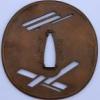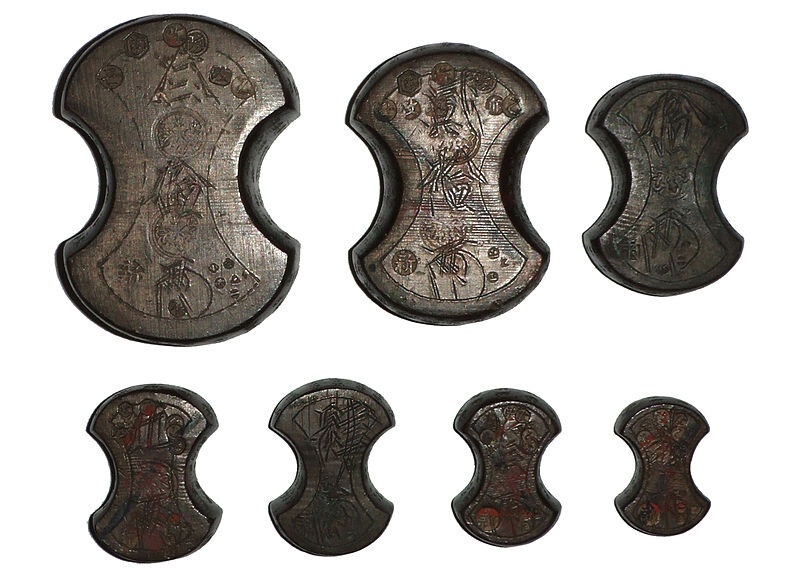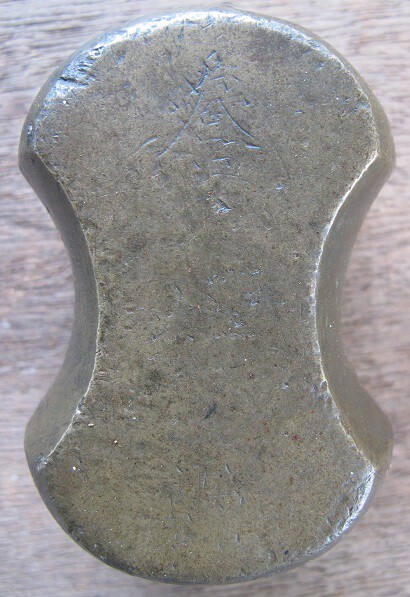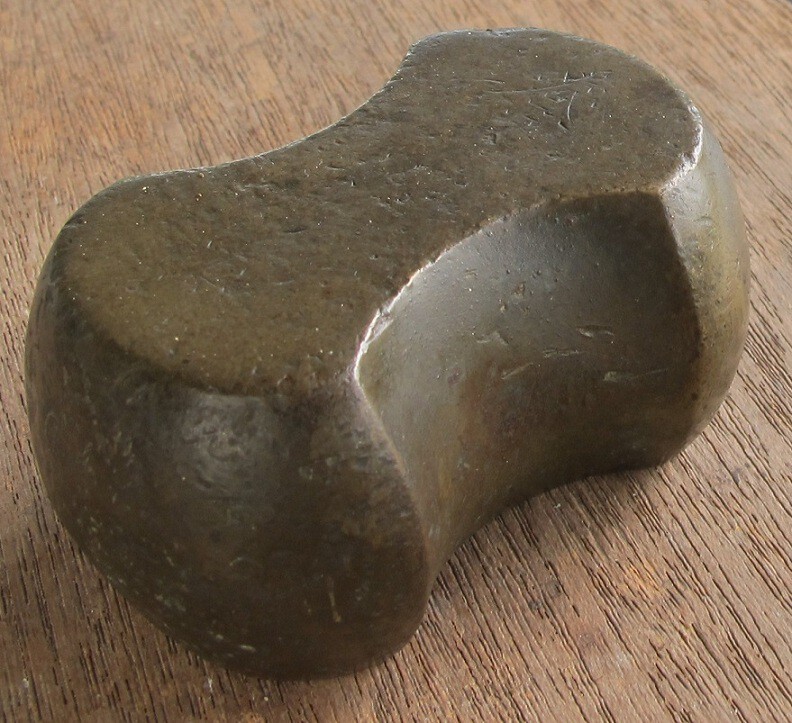-
Posts
827 -
Joined
-
Last visited
-
Days Won
4
Content Type
Profiles
Forums
Events
Store
Downloads
Gallery
Everything posted by Lee Bray
-
An unusual find... I believe the signature reads Keiryu. There is one smith who signed with these kanji in my reference book(Hawleys). Here is the info. Keiryu - Yamashiro 1681 60 Same as Yoshihira ~ ~ KEI2 So, your sword is signed by Keiryu of Yamashiro province(or made his work in Yamashiro style). He lived around 1681, so if the signature is genuine, your blade is of that time. Very roughly, 1600 - 1800 AD, was known as the Shinto period. The 60 refers to a points rating. 60 is high and means your smith is a good one. Bear in mind that fake signatures of the big names have been put on blades by the Japanese for centuries so that could be the case here. I'd recommend getting this blade into knowledgeable hands as it could be worth something. They'll also be in a better position to say if the damage to the blade is repairable. Given the macabre appearance, that it was found in the woods and doesn't appear to have been there for too long...maybe it should visit the local constabulary first. If you go that route, figure out where you've been every night for the last year and go with a lawyer... P.S. http://www.nihontomessageboard.com/faq.html You'll find general care and maintenance described here. Fingers on a blade can cause expensive damage to a polished blade. This blade isn't polished but I certainly wouldn't want my fingerprints on it.
-
There doesn't appear to be anything about this sword that suggests WW2 except that it came from Japan in 1945. Swords of all ages were taken from Japan at that time so you cannot determine its age from that.
-
The way the nakago kinks towards the jiri makes me think Hizen Tadakuni. Here is a good example of what I mean - http://yakiba.com/juyo_token_tadakuni.htm But in current condition that would be a large assumption to make. I certainly think that little dog leg in the nakago is a pointer to something - whether it be Tadakuni or another smith/school that shaped their nakago that way.
-
Not sure even Neil Armstrong would want to make that step. You want to avoid making any judgement of the blade,especially age, from what you see of the fittings. High quality fittings may suggest a good blade but not necessarily. This saya may not have been made for the sword, it just happens to fit, so what you can learn from that? (not saying that's the case, just an example) Assessing this blade to Heian period because there's an elephant on the saya is a quick road to ruin. Learn the blade.
-
http://en.wikipedia.org/wiki/File:%E5%B ... 8A%851.jpg http://ja.wikipedia.org/wiki/%E3%83%95% ... -hundo.jpg http://ja.wikipedia.org/wiki/%E3%83%95% ... undo10.jpg Seems they were used by the Goto family as currency exchange weights. A tad more interesting than weighing out sprouts. Morita-san, you were spot on with the 300 momme guess. The article lists the largest weight at 1124.27g so 1115.7g is not far off.
-
Thanks, Morita-san. A wear and tear loss of ~8g is not so much of a stretch including scale differences. Fundo 分銅 Taken from RichT's site. http://kodogunosekai.com/
-
Is this a Japanese fundo? I came by it in Hong Kong several years ago and assumed it was a large, Chinese paper weight or scale weight. Recently, though, I saw a tsuba on RichT's blog which pictured a set of fundo which are identical in shape. It's made of either brass or bronze and weighs 1115.7g so doesn't correlate with any Japanese weight units. I believe 2 kin weigh 1.2kg and although it's had a few divots taken out of it, it's a bit of a stretch to think it's lost 84.3g...although it could have belonged to an unscrupulous merchant who liked light weights...(who ever heard of such a thing ) There also appear to be 3 or 4 kanji/hanzi on the top. Too much abuse to read them but the top could be Kin. Thanks for any information.
-
Thanks, chaps. I would have said that machi-okuri would not affect an ubu nakago since the sabigiwa(rust border between habakimoto and nakago) separates the nakago from the blade to me. But if the NTHK say that a nakago is not ubu because of a 1cm machi-okuri...fair enough.
-
An orikaeshi mei blade still has its mei but is far from ubu. A Koto tachi nijimei with the kanji just above the jiri...that retains its mei but is not ubu. Just because the mei is present doesn't mean the nakago is ubu. Would machi-okuri be regarded as an alteration of the nakago and make it not ubu?
-
I think he means a gimei of the Kamakura period Ryokai, son of Rai Kunitoshi. http://www.sho-shin.com/rai3.htm
-

An interesting katana I bought - opinion please - Dr Watson.
Lee Bray replied to Cuirassier's topic in Nihonto
Mark - if it is forge scale on your tang then the tang will have been heated to such a degree that the hamon in the blade will be adversely affected. I'd be hoping it is pine resin or some other glue residue if I were you. -
The steel in Chinese fakes is cheap, of unknown quality and has no heat treatment. 'Backyard tameshigiri', any kind of cutting and possibly even just swinging it will more than likely result in a broken blade and worst case scenario, the broken bit is lodged in you or anyone with you. Save your money and some probable grief.
-
The above Yasuoki has been returned to the Hong Kong owner with no problems. It was held in customs and returned by them, never making it to the Tokyo dealer. The dealer has since said that for swords made less than 100 years ago he needs the details first, then he can apply for an entry permit for the sword and proceed as normal. I believe this is also the case for hand carried swords as a respected US polisher had issues hand carrying a Gassan(less than 100 years old, don't know which Gassan) blade into Japan at the same time as the Yasuoki incident. He actually managed to get it through but had to pay an import tax and was told he would no longer be able to bring in modern swords without the necessary paperwork.
-

Ebay Tsukamaki "Museum quality"
Lee Bray replied to Jimmy R's topic in Auctions and Online Sales or Sellers
I just had a Gendaito tsuka wrapped by David. Great work, good price and easy to deal with. I'd recommend him and will certainly use him again myself. -
Isn't that just tempering, reducing the hardness with heat? I'm wondering why high carbon steel would be considered for a tsuba. High carbon steel would have been reserved for swords. It makes little sense to me that HC steel would be used in tsuba but maybe it was. Henk - Of course it's brittle otherwise it wouldn't chip, it would roll.
-
Hardened steel is brittle. Unhardened steel is tough and malleable. Why any warrior would want a hardened, high carbon tsuba next to his fingers is beyond me.
-
Thanks for the explanation, Chris. O MiMi's knowledge is second to none so food for thought. I'm not entirely convinced though, as it still seems to me that compete carbon migration would negate any value of soft core steel to hard edge steel.
-
Hi Chris, Carbon diffusion takes place at welding heat but not to the degree that the entire piece is homogenous otherwise what would be the point of shingane, kawagane and hagane in a sword? Edit - I just noticed your use of the word 'local' which could invalidate my point but then recall the So Tsutomu hamon. There was a clear demarcation between the two different carbon content steels and they reached welding heat.
-
-
Hi Christian - Perhaps Dr. Hoopes was working from incorrect material as I believe Nihonto are tempered(yaki-modoshi) after quenching(yaki-ire). It is outlined in Yoshihara's "The Craft of the Japanese Sword" on page 92. David, I believe Ford's comments meant that if some tsuba were hardened, it would be very difficult to add sekigane or hitsuana at any time after they were made. Any work to fit the tsuba to another sword would be almost impossible if the tsuba steel was hardened to any degree. Files don't cut, saw blades don't cut and punches would have a hard time moving hardened steel. It seems to make little sense to harden tsuba steel.
-
If you're thinking that the higher hamon is a 'ghost' of the former hamon prior to re-tempering, that's not the case. A sword would be annealed prior to yaki-naoshi and any former hamon would disappear as a result. Even if it wasn't annealed, the temperature reached in yaki-naoshi would wipe out the former hamon. If that's not what you're thinking...my apologies.
-
Tsuruta-san states at the bottom of the blurb, "This sword was made a copy of Kiyomaro." Regarding the 'double hamon' - are we looking at honsanmai construction using a higher carbon steel on the side(kawagane) than normal? High enough carbon that hardens during heat treatment as opposed to a low carbon steel on the side that would stay soft. The nie seems to follow the internal 'hamon' line, so this is the hard edge steel(hagane). A low carbon kawagane would not harden and the border where the two steels meet blends into the hada(or can be seen as a faint colour change in the steel in some swords that use honsanmai). A higher carbon kawagane would harden, especially with the higher heat treat temperatures used to create nie(if my thinking is correct) and that is what we're seeing here. Slightly lower carbon kawagane than hagane and you'd get nie in the hagane and none in the kawagane if your heat treat control was precise.
-
I can confirm the sword was a signed and dated Yasuoki and was sent to a long established dealer in Tokyo by a chap in Hong Kong. The agent was told the rules had changed and blades less than a century old were not allowed in. The agent relayed this back to the sender. As of yet, I'm not sure if the sword has been held or shipped back. Hopefully, just an ignorant official, as you say, but it would be good to get the full story.
-
Yet you're suggesting that these same people rub diamond paste on a 3ft razor? Sensible... :D








